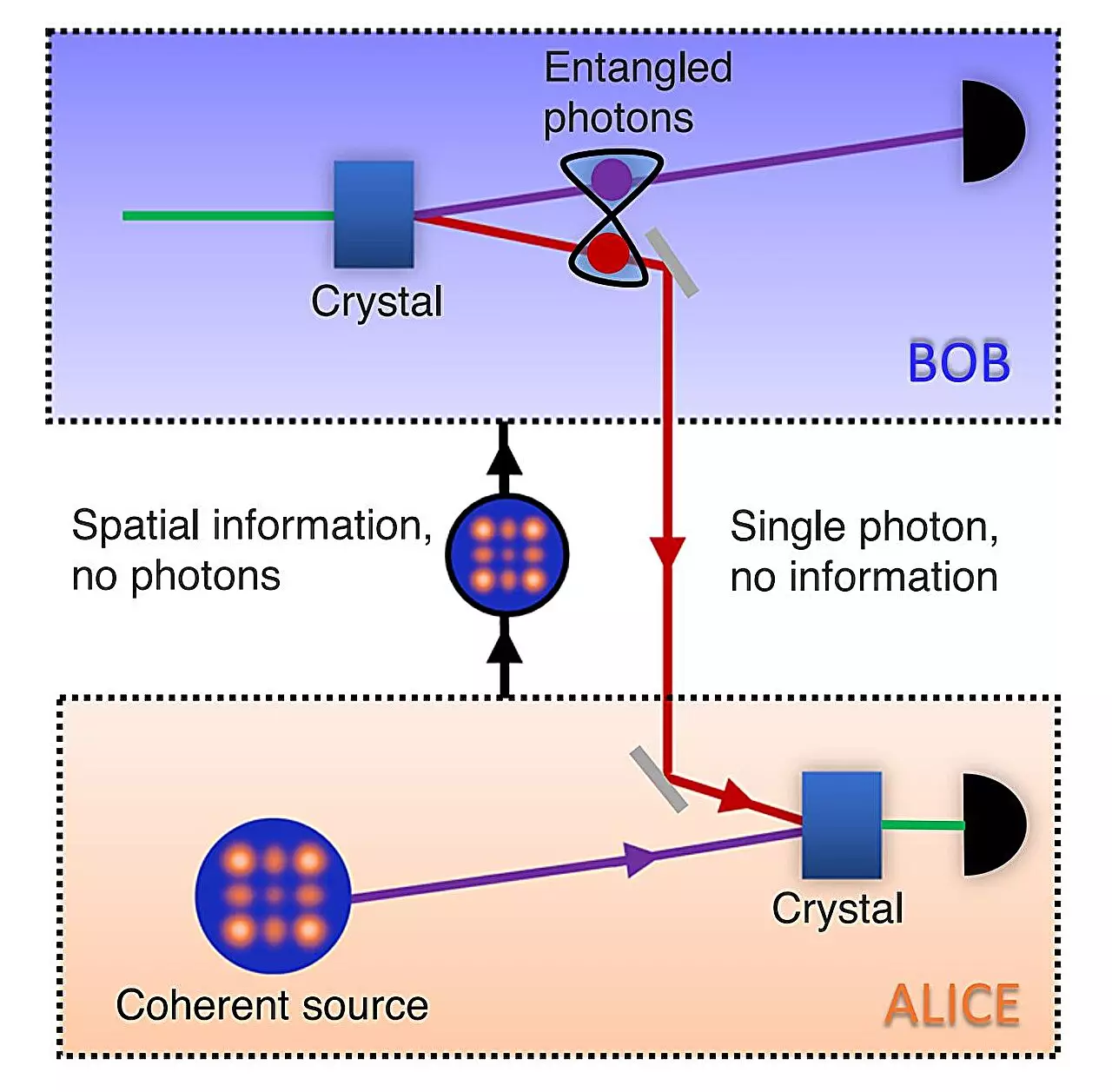In a groundbreaking study published in Nature Communications, an international team from Wits University and ICFO – The Institute of Photonic Sciences has achieved a major milestone in the field of quantum communication. The research demonstrates the teleportation-like transport of light patterns, marking a crucial step towards the realization of a quantum network for high-dimensional entangled states. This new approach allows for the transmission of information without physically sending the image, opening up possibilities for secure and efficient quantum communication over long distances.
Traditional communication methods involve physically sending information from one party to another. However, in the quantum realm, this approach is no longer necessary. Professor Andrew Forbes, the lead PI from Wits University, highlights the significance of this breakthrough, stating, “Now, it is possible to teleport information so that it never physically travels across the connection – a ‘Star Trek’ technology made real.” Quantum teleportation has previously been demonstrated with three-dimensional states, requiring additional entangled photons for higher dimensions. This research marks the first experimental demonstration of quantum transport of high-dimensional states using just two entangled photons as a quantum resource.
To achieve this remarkable feat, the team utilized a nonlinear optical detector that eliminates the need for additional photons. This detector can handle any pattern that needs to be sent, providing a new state-of-the-art of 15 dimensions. The scalability of this scheme opens the door to even higher dimensions, paving the way for quantum network connections with high information capacity. This breakthrough has significant implications for information security, enabling the establishment of quantum networks with enhanced capabilities.
Imagine a scenario where a customer needs to send sensitive information to a bank, such as a fingerprint. In traditional quantum communication, the information must be physically transmitted, posing a risk of interception. However, in the newly proposed quantum transport scheme, the bank sends a single photon from an entangled pair to the customer. The customer then overlaps this photon on a nonlinear detector with the information to be sent. As a result, the information appears at the bank as if it had been teleported, with no physical transmission between the two parties. This approach effectively prevents interception, as the quantum link is established through the exchange of entangled photons.
While this protocol exhibits the hallmarks of teleportation, it requires a bright laser beam to make the nonlinear detector efficient. This ensures that the sender knows what is to be sent, without needing to know the specific information itself. Professor Forbes clarifies that while it may not strictly be teleportation, advancements in the efficiency of the nonlinear detector could make it a reality in the future. Nonetheless, this breakthrough introduces nonlinear quantum optics as a valuable resource for connecting quantum networks.
Promoting Further Advances in Nonlinear Optics
Dr. Adam Vallés from ICFO emphasizes the importance of this experiment in motivating advancements in the field of nonlinear optics. The feasibility of the process demonstrated in this study offers possibilities for establishing high-dimensional secure channels for quantum communication. Although certain limitations exist, such as the potential for cheating senders to keep better copies of the information, this research sets the stage for future developments. Dr. Bereneice Sephton from Wits University is acknowledged for her determination and comprehensive skill set in successfully executing the key experiments.
Moving forward, the team plans to continue their research on quantum transport across an optical fiber network. By addressing the challenges associated with quantum repeaters and single photons, the team aims to refine the teleportation process and further advance the field of quantum communication. This groundbreaking study not only pushes the boundaries of scientific understanding but also holds immense potential for revolutionizing information security in the future.
The teleportation-like transport of light patterns represents a significant milestone in the field of quantum communication. This research provides a new approach to transmitting information without physically sending the image, leading to the establishment of secure and high-capacity quantum networks. The utilization of nonlinear optical detectors and the potential for higher dimensions pave the way for further advancements in the field of quantum communication. As the journey towards a fully implemented quantum network continues, researchers remain dedicated to pushing the limits and harnessing the power of quantum communication for a more secure and connected future.


Leave a Reply